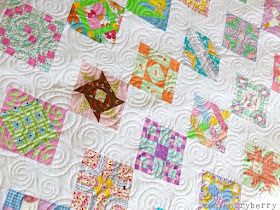Frances Tobin from
The Maker's Atelier has written a dressmaking book and she kindly offered me a copy to review. I'd seen the sneaky glimpses inside on her
Instagram feed, I like how she's developed her luxe, sportswear style within the busy indie sewing pattern market and so I jumped at the chance.
I like to approach dressmaking books primarily as a sewist so first and foremost, I want to know the practicalities of a pattern based book. Is it easy to use? What patterns are inside? What sort of detail does the author go into?
Format
The book has a soft cover and is held together with a firm folding magnetic strip which also acts as the book spine: the whole thing opens out like a folder with the book on one side and the patternson the other. The pattern section is about ½" in depth and the string-tied closure/card envelope matches Frances'
Maker's Atelier dressmaking patterns. The best thing is that both sides, the text and the patterns, open out. For the book section in particular, I love this feature, any page will lie completely flat, I wish every sewing book did this!
When I first saw this feature, I thought Frances might have self published the book. It looked like the sort of styling and practical layout that an experienced dress designer would want, but also something that a publishing house would shy away from as too costly or difficult to manufacture. All credit to
Quadrille,
this book clearly follows Frances' vision and
The Maker's Atelier Aesthetic throughout.
Patterns
There are eight designs in total: a stretch pencil skirt, drape-front top, cigarette pants, tie-neck blouse, a book bag, raw edge coat, wrap skirt and an over-sized T-shirt. It's a capsule wardrobe concept with interchangeable separates (three tops, three bottoms), an accessory and an outerwear garment. You can see a version of each pattern in the picture below and more variations are included in the book, including lengthening/shortening, new construction elements, different finishes and alternative fabric choices. The tops tend to have a relaxed fit and the bottoms are closer fitting. There's also a mix of woven and knits. Some garments are designed specifically for knits - the stretch pencil skirt for example, whereas others can be made from either, like the drape-front top. There's a lot of information about more unusual fabrics you may not have used before including thicker, less pliable fabrics like leather, suede, felted fabrics; unusual fabrics like neoprene, stretch PVC, sparkling sequins and coated technical jersey, and luxurious fabrics like scarf silk and satin crepe. The shapes are simple and there are some notable details from France's experience and knowledge working in the fashion industry. Above all, she likes to let the fabrics do the work.

There are six, double-sided printed pattern sheets. Some are for a single garment, like the over-sized t -shirt, others have two garments spread across the two sides. They are clearly labelled and the separate size lines are easy to see so although you need to trace, the task is not too onerous.
Details
There's lots of information in this book. There are two sizing systems- one for the more fitted garments (eight sizes) and another for the looser styles (four sizes which straddle the eight sizes) and finished garment measurements for all styles. For each pattern, the same format repeats: how the style came about, a technical description of the garment, sizing, fabric quantities, layout/cutting, step-by-step instructions with diagrams, how it can be worn and then suggestions for hacks/variations with more instructions and diagrams. There's no skimping, with lots of detail and information, especially in the variations, and the diagrams and photos are well spaced so it never feels busy. The size range is from 32" - 46" bust.

The book's colour palette is a warm mix of caramel tones, neutrals and metallics that are a familiar feature of
The Maker's Atelier brand. Frances is based in Brighton and sources many fabrics from
Dïtto fabrics, well-known for it's designer, quality fabrics. She lists many of her other favourite shops in the back of the book. It's a stylish, classy, clean-cut aesthetic.
Here's a close up of some of the garment styles:
The bag is a simple accessory and although the construction is very basic (no pattern needed, measurements given for various sizes) there are handy tips for using leather, adding a lining and making a fold-away shopper.


It's a beautiful book, easy to use and a pleasure to look through. I especially like France's use of metallics - as I go into my later 40s, I appreciate metallics more and more! It's a grown-up book, the styles could form part of a work wardrobe, day or evening wear depending on your personal style. I favour the more casual garments as they suit my lifestyle. The skirt silhouettes aren't my usual shape - I like more swish - although I do like the asymmetry of the wrap style. I'll be making the oversized T-shirt first with some draped striped jersey. Do note that seam allowances are usually ⅜"/1cm. Only one pattern is an existing
Maker's Atelier pattern (the stretch pencil skirt) so the book offers good value, especially compared to individual patterns. There's plenty of guidance: the fabric details and advice in particular make it much easier to recreate a garment as it appears in the book. The shapes are simple enough to appeal to beginners, and the more advanced fabric options appeal to the more experienced dressmaker. Frances is a straight talker and writes well, there's lots of advice and tips throughout and she keep styles and construction as simple as possible- less is more! The photography deserves a special mention, credits to Amelia Shepherd and Katya De Grunwald.
You can find
The Essential Collection via
Quadrille and
The Maker's Atelier as well as the usual online and bricks and as ever my own.
SaveSave











































